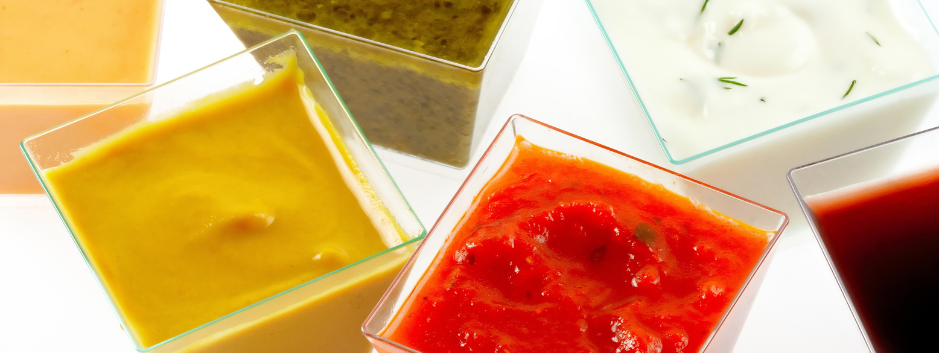2 Kallang Avenue #07-18
CT HUB, 339407
Singapore
Thickeners have been widely used in the food industry, including sauce products. Sauce products refer to condiments made mainly from vegetable protein and carbohydrates. Multiple amino acids and various sugars are formed through microbial enzyme action during fermentation and hydrolysis, and based on these substances, they undergo complex biochemical changes to form seasonings with special color, aroma, taste, and texture. Food thickeners used in sauce products have the characteristics of thickening, concentration, salt and temperature resistance, anti-precipitation, and prevention of scale formation. They make the sauce thick and enhance the thickening effect. They also have stable performance, good taste, strong sauce aroma, and lasting aftertaste. Thickeners improve the texture of sauce products and the physicochemical indicators, such as salt-free solids, of finished products.

Salt resistance of food thickeners
Sauce products usually contain high salt content, generally around 12% to 18%. Most thickeners have poor salt resistance, especially to high-priced metal salts, which easily form precipitation. Experimental results have shown that xanthan gum, CMC-Na, guar gum, konjac gum, Robinia pseudoacacia gum, and flaxseed gum have strong salt resistance and synergistic effects.
Xanthan gum is a microbial extracellular polysaccharide produced by microbial fermentation based on carbohydrates. It is often used in food or other products due to its significant increase in system viscosity. Food thickener xanthan gum not only has good water solubility, thickening, pseudo-plastic flow, thermal stability, acid-base stability, and enzyme stability, but also has high stability to salt. Xanthan gum solution can be mixed with many salt solutions without affecting viscosity. Guar gum is a neutral polysaccharide with good compatibility with inorganic salts and tolerance to low-priced metal salts, but high-priced metal ions can reduce its solubility. Flaxseed gum is a mixture of polysaccharides (mainly acidic sugars) and a small amount of protein. Flaxseed gum has poor tolerance to high-priced salts, but good tolerance to low-priced salts. Even at high concentrations, the viscosity of flaxseed gum is minimally affected. It also enhances gel strength and improves transparency.
Synergistic effects of food thickeners in sauce products
The synergistic effects of hydrophilic colloids can effectively improve product quality and reduce their usage in production. The synergistic effect of flaxseed gum with xanthan gum, guar gum, konjac gum, arabic gum, CMC-Na, and other hydrophilic colloids is also significant, mainly manifested by a significant increase in solution viscosity, improved acid and salt resistance, better emulsification, and improved suspension stability and moisturization.
Food thickener xanthan gum and guar gum also have good synergistic effects. The combination does not form a gel, but it can significantly increase viscosity and salt stability. They have an appropriate ratio, with the most suitable ratio being 3:7 for xanthan gum and guar gum. When the content of xanthan gum, Robinia pseudoacacia gum, and guar gum is 0.2%, 0.01%, and 0.9%, respectively, the salt resistance is the best, with the minimum amount used and the lowest cost. When the content of xanthan gum, konjac refined powder, and guar gum is 0.3%, 0.01%, and 0.8%, respectively, the salt resistance is the best. The thickeners for sauce products on the market are designed and produced using the above principles, and their effects are far superior to those of single thickeners.
If you need more information about Thickeners, do not hesitate to email sales@aceingredients.com.